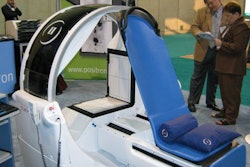Dear AuntMinnie Member,
The growing power of cardiac CT angiography has also resulted in increasing concern over radiation dose, especially with the new generation of 64-slice CT scanners. But clinicians can mitigate CTA radiation dose with a variety of techniques.
That's the word from a presentation from Stanford University's International Symposium on Multidetector-Row CT that we're featuring this week in our Cardiac Imaging Digital Community. Staff writer Wayne Forrest was on hand to report on a presentation by Dr. U. Joseph Schoepf of the Medical University of South Carolina (MUSC) in Charleston.
Heart-rate control is a key factor in reducing radiation exposure in cardiac CTA, with significant dose reductions possible through ECG-gated dose modulation, also known as ECG pulsing. Patients with high or irregular heart rates present a problem for ECG pulsing, but this can be rectified through the use of beta-blockers.
The article also includes a table describing typical effective radiation dose values for various CT and non-CT procedures, and discusses how new CT technologies offer the potential for further dose reductions. Check it out by clicking here.
In another recent article in the community, Dutch researchers found that they could predict mortality risk in elderly men through a combination of ultrasound-based carotid plaque assessment and the measurement of C-reactive protein (CRP) and interleukin-6 (IL-6) levels. They found that their test was more accurate in this group of patients than more traditional tests like the Framingham and Dutch Risk Function scores. Find out how they did it by clicking here.
Read about these stories and more in the Cardiac Imaging Digital Community, at cardiac.auntminnie.com.



















